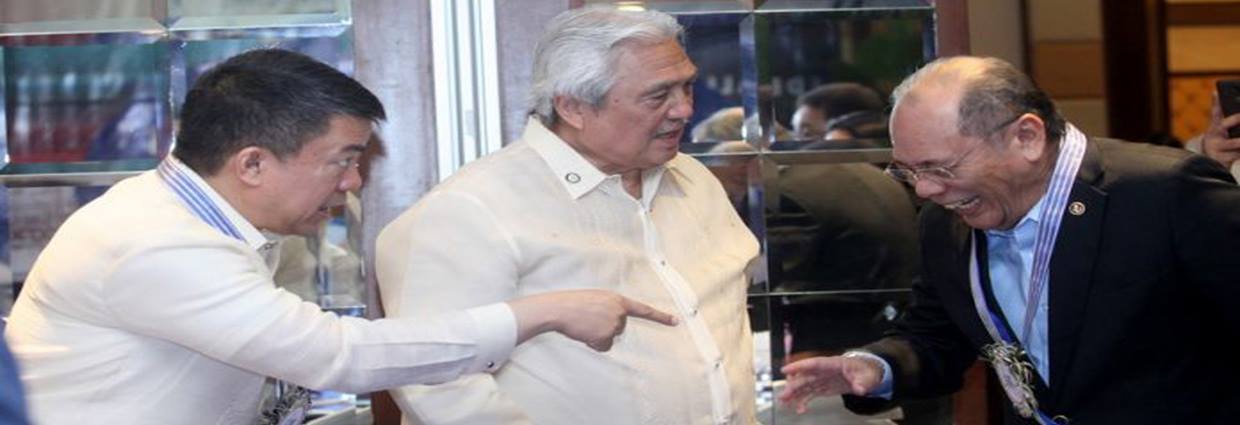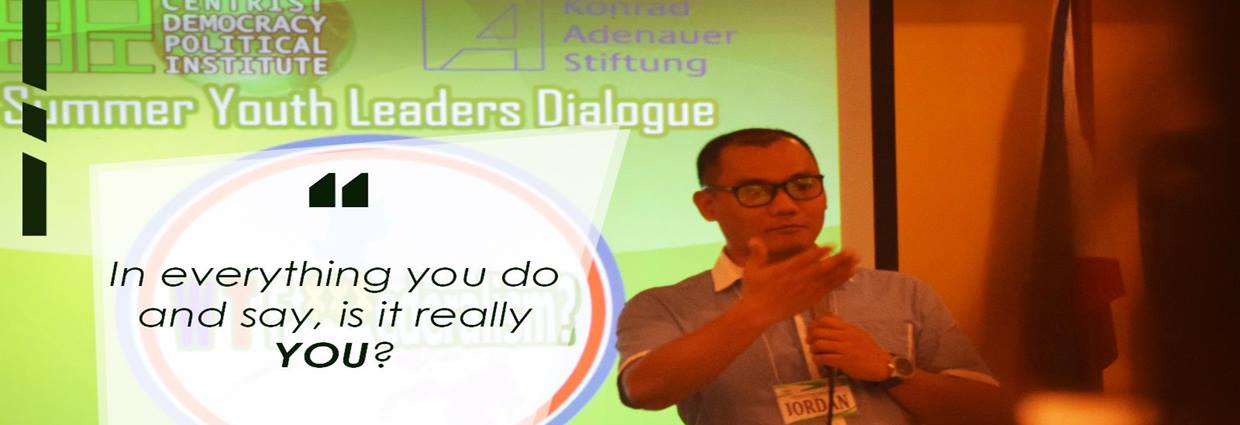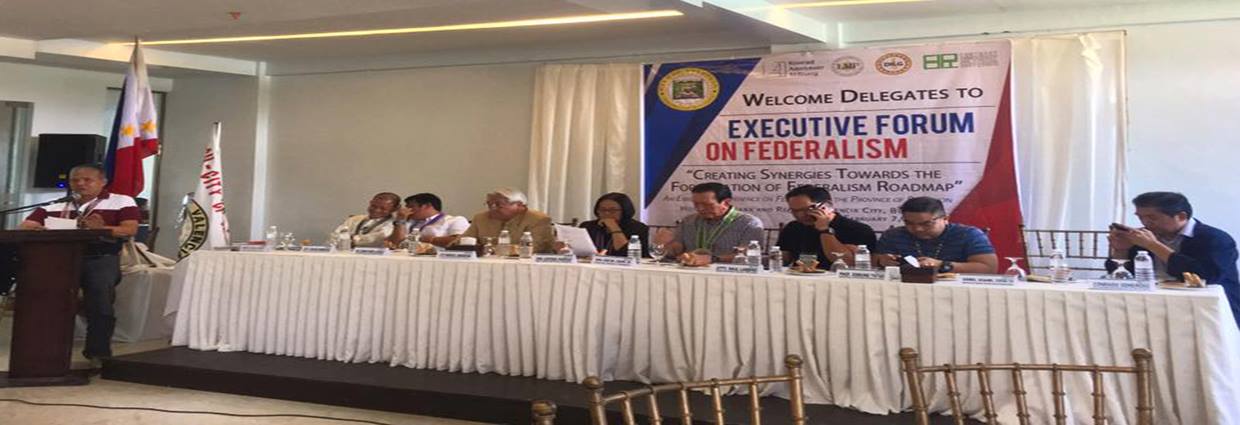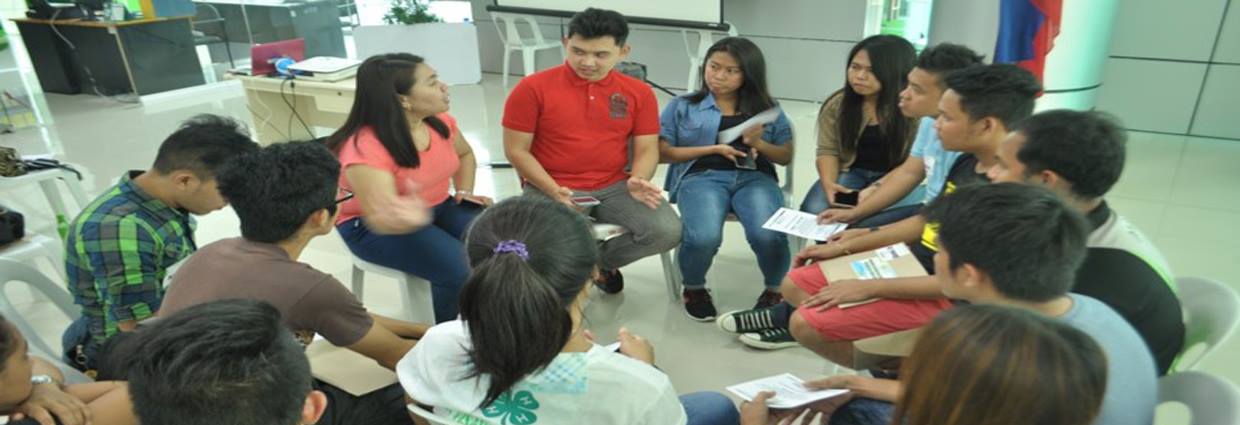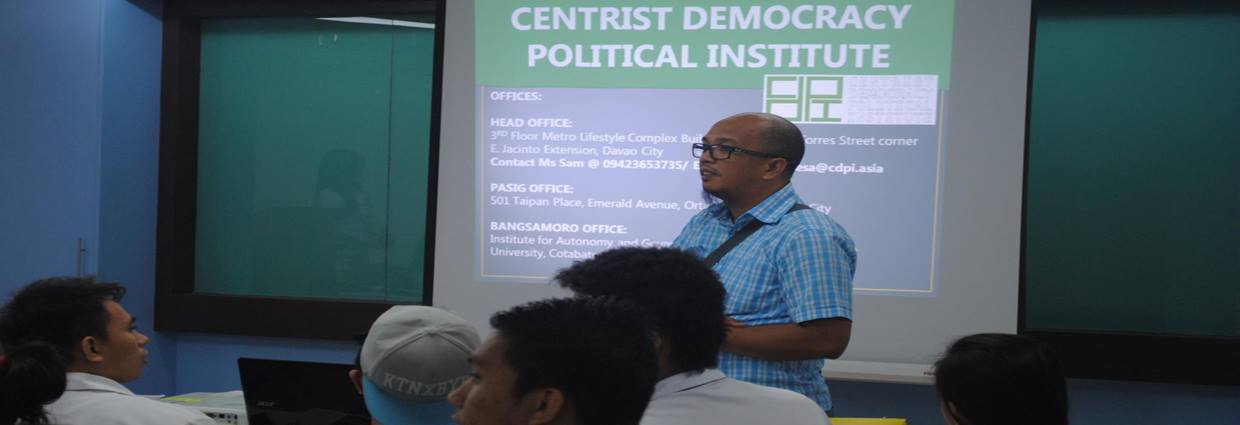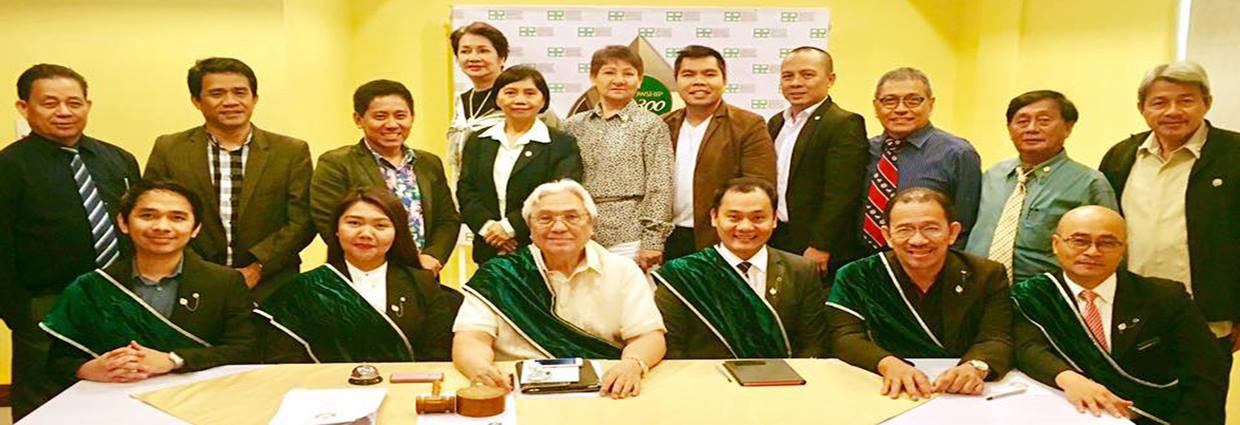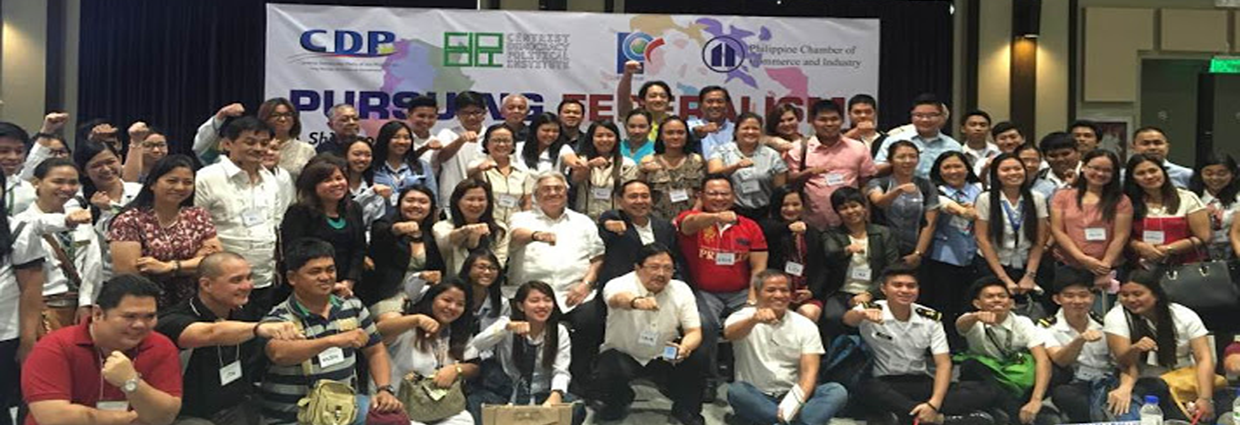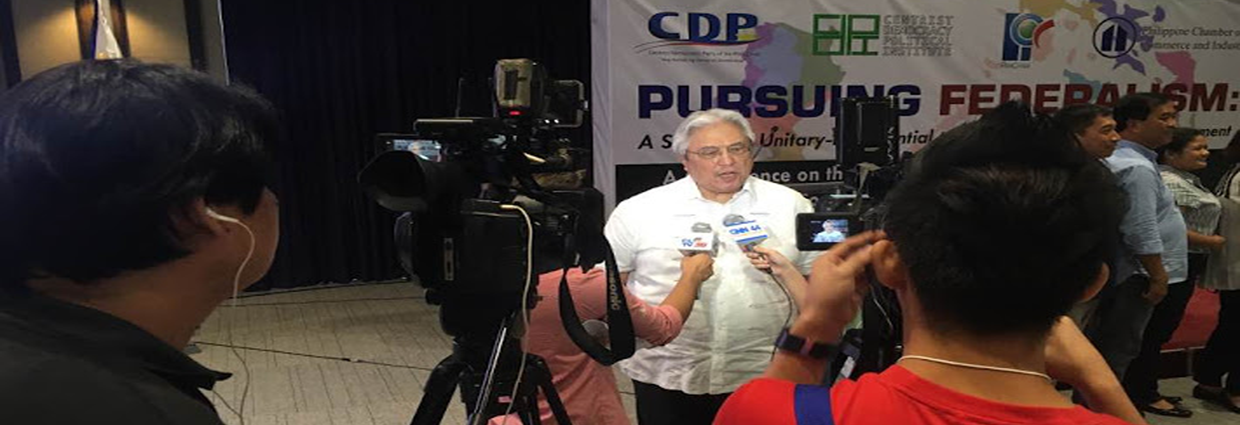‘I CAN’T BREATHE!’ - America fraying at the seams
Protests and riots
But on the second front, the protests and riots are simply symptoms of a rot in America’s body politic. In 1991, riots erupted in Los Angeles when white policemen were acquitted of the savage beating of a black man, Rodney King, also caught on video. “Fury over the acquittal — stoked by years of racial and economic inequality in the city — spilled over into the streets, resulting in five days of rioting in Los Angeles. It ignited a national conversation about racial and economic disparity and police use of force that continues today” (National Public Radio, April 26,2017). And this conversation is articulated in deadly fashion — again and again.
Last week’s killing by white policemen of a black man is nothing new. George Floyd was just one of those ordinary faceless blacks, whose death in normal circumstances would have been just another statistic not meriting sympathy, except that the egregious act was caught on video and went viral. Floyd’s plea — “I can’t breathe!” — has become the rallying cry in American cities for legitimate protests, giving vent to pent-up anger for injustices and disregard for simple decencies. It is unfortunate that the same is used as a clarion call for many to break the law, riot and loot. Pundits are now proselytizing that the American system is breaking up. No, sir! The American system was built this way and operating the way it was intended to do; only that Covid-19 “…lays bare America’s brutal fault lines — race, gender, poverty and broken politics” (The Guardian, May 28, 2020).
Democracy and the American way
Floyd’s killing in Minnesota was no fluke. Ahmaud Arbery, while jogging last February in Georgia, was mistaken for a burglar by white men, a father and son, who hunted him down. A two-month cover-up by white policemen prevented charges from being filed until outrage was provoked by national media and a video clip of the shooting appeared.
Many believed these victims were killed because they were black. But that nuance was lost in the collective pretense of mostly white America, that the American way of life stands for justice, fairness and the rule of law, guaranteeing bearing of arms used effectively to intimidate during mass gatherings like those responding to Trump’s tweets to “Liberate Michigan, Minnesota and Virginia.” All these enshrined in its constitution; plus, freedom of speech, worship…blah blah, blah! These are the selling points of American democratic concepts. And we are likewise conversant with its opposite — totalitarianism. But this pandemic exposed the fallacies of both systems in their responses to crises. They are in fact two faces of the same coin. Ask the Hong Kong people what they think now of China’s 50-year guarantee of “one country, two systems” during the British 1997 handover (TMT, April 27, 2020).
US presidency
With this pandemic bringing the world to its knees, it wouldn’t care if America burns its cities down, except for the victims themselves. Why should they? Even Trump does not really give a hoot about the deeper causes behind why its citizens act the way they do. He is a linear thinker with horse blinders on: he sees the gathering protests, the burning and the looting — ergo, everyone is a lawbreaking scum. He is unable to capture the nuances, the deeper meanings, the root causes; but more importantly, he is incapable of empathy. His tweets added fuel to the fire. Responding late to the crisis, “Trump called the protesters ‘thugs’ and threatened to have them shot. ‘When the looting starts, the shooting starts,’ he tweeted, parroting a former Miami police chief whose words spurred race riots in the late 1960s” (The Guardian, May 31, 2020).
So, it is somehow uplifting when the Houston police chief admonished Trump to “shut his mouth” if he cannot contribute constructively to ease tensions. Perhaps for many Americans, Art Acevedo could emerge the new hero. But Trump will try to take his pound of flesh off this man. He is that kind of person, narcissistic, vengeful and petty.
Trump has made it clear by now that the American people and the world’s priorities are incongruent with his own. A revived robust US economy could give him his second term by November. Getting the economy back to “normal” is imperative, despite Covid-19. And he has shown personal contempt for health protocols. He publicly disdains wearing a mask.
Robert Reich, a former labor secretary in the Clinton administration, has this to say: “By having no constructive response to any of the monumental crises now convulsing America, Trump has abdicated his office. In reality, Donald Trump doesn’t run the government of the United States. He doesn’t manage anything. He doesn’t organize anyone. He doesn’t administer or oversee or supervise. He doesn’t read memos. He hates meetings. He has no patience for briefings. His White House is in perpetual chaos…But it has taken the present set of crises to reveal the depths of his self-absorbed abdication — his utter contempt for his job, his total repudiation of his office”(The Guardian, May 31, 2020)
The winds of war
In the wake of this pandemic, the Middle Kingdom hegemon is on the ascendant while America is on the wane. A cold war is looming on the horizon. But let us be mindful of the Thucydides Trap (“Destined for war,” TMT, Nov 27, 2019). And we should all be terrified by the state of mind of an adolescent in the White House legitimately allowed to hold the levers of power like toys and no adult supervision. The “winds of war” are blowing. There is a new reality in the West Philippine Sea, once an “American lake.” China’s flags now sail in force, fortifying islands usurped from neighboring countries, including ours, virtually unsinkable aircraft carriers.
The situation is dangerously volatile with nervous fingers on the trigger — for Trump on the nuclear codes by the “the football.” Steeped in the arcana of reality TV like “The Apprentice,” desperate to reverse his plunging ratings with voters and trying to play to his base, he may just be tempted to risk changing the calculus, uttering his iconic phrase to Chinese President Xi Jinping, “You are fired!”
I hope this will not be lost in translation. Or God help us all!
Our world after Covid
When elephants dance, the ants…
A MOST interesting development partly as a result of this pandemic is the rise of China and the decline of America in the world stage (The Manila Times or TMT, April 15, 2020). Each country took a different path, both captives of their own historicity, keeping faith with their political dogmas but singular in their desire for their citizens to survive; perforce that of their society and their dominant values. Their actions and decisions coming from different perspectives produced naturally disparate results. This column is a sequel to last week’s brief comparison on the behavior of two contemporary presidents, The United States’ Donald Trump and the Philippines’ Rodrigo Roa Duterte (PRRD), where the former pales in comparison to the latter. I now inject China’s President Xi Jinping into the equation (TMT, May 13, 2020).|
A totalitarian mandarin
Unlike the US and Philippine leaders, whose legitimacy rests on the acquiescence of the will of the majority through the ballot, China’s chief executive is different. What is axiomatic for such totalitarian states is that theirs is determined by the self-selective clique that has ruled modern China as its political “royalty”/politburo. Succession to power is through a similar concept of political primogeniture, defined loosely as the prince-in-waiting’s influence over the politburo that is able to satisfy the loyalists while cutting off the heads of the seemingly perfidious. Of course, it helps if the inheritor’s pedigree is traceable to the original revolutionaries of Mao Zedong’s “Long March.”
Xi Jinping is a visionary, president-for-life upon the tolerance of the Communist Party. Their collective vision toward the year 2049 is to displace America from global leadership — establishing China’s economic supremacy. And he appreciates the importance of strategy — perhaps an avid student of Sun Tzu — grasping complicated concepts of this war against America even if America does not know it yet.
China and America were the two best prepared countries to weather a pandemic. China, the totalitarian state, acted swiftly unhampered by the niceties of human rights and its people’s opinion. America, true to its democratic traditions acted slow, mindful of the individual’s interpretation of freedom. But the biggest flaw in America’s democratic system is President Donald Trump.
A rogue president
Long before the pandemic, the moral, sensible and pragmatic deficits in America’s political leadership surfaced, centered on its impeached president; in a series of deliberate acts signaling America’s retraction from its global pre-eminence encapsulated in Trump’s motto of “Making America Great Again” (MAGA). These unilateral initiatives, from abrogating the 2015 Paris Agreement on climate change mitigation; to its withdrawal from the Iran nuclear deal painstakingly hammered by members of the UN Security Council (plus Germany); insulting and abandoning its old European allies; all these define the bizarre profile President Trump has been projecting.
I quote from my column “Clash of civilizations” (TMT, March 27, 2020): “The world will not tolerate a power vacuum and a dangerous political vacuity opened up resulting from the withdrawal of the United States from world engagements. The unilateral abrogation of the Trans-Pacific Partnership (TPP), the ominous bilateral trade talks with China and Trump’s naïve posturing toward its protegee, Kim Jong Un, allowed Xi Jinping a degree of confidence to flex his muscles, test the waters and encroach into the West Philippine (South China) Sea, upsetting the countries in the periphery.”
This was the backdrop by the time the pandemic struck when President Trump caused “the United States, whom many countries look up to for leadership of the free world, to irresponsibly abandoned this role and relinquished its ascendancy.”
China is now poised to take hold of the global narrative in many aspects — from the post-Covid economic recovery, and possibly a handle on trade which for decades America under the guise of the globalization mantra, used as the vehicle for liberal democracy and capitalism, primarily to create and expand world markets. This will perhaps usher in the China century, or more appropriately, the Middle Kingdom hegemony.
Chinese marionette
Since Duterte’s pivot away from an old ally, America, and the hammering out of a foreign policy declaring we are “friends to all and enemy to none,” we find ourselves being drawn to China, with offers of concessionary loans and grants for our infrastructure spending; not unlike China’s Belt and Road scheme whose tentacles have engulfed poor and developing economies in Africa, Asia and even the countries in the European Union.
But there is another facet to China, which is no less obnoxious. China has bullied its way through the West Philippine Sea and usurped Philippine-owned islands. Upon PRRD’s assumption to power, the Philippines was gifted with a favorable ruling by the UN arbitral court negating China’s nine-dash line that illegally expanded its territory, encompassing those of the neighboring countries, including ours. But Duterte has since downplayed this victory in exchange for economic benefits from China, thereby surrendering the moral high ground with the lame excuse that “…he cannot let soldiers die in a war that the country is certain to lose.” With characteristic naiveté, he held on to Xi Jingping’s ‘forked tongue’ promise that no more developments would be done in the disputed areas. Since then, Beijing has garrisoned these islands. President Duterte refused to or was incompetent to explore other diplomatic options.
The cost of “giving up” the West Philippine Sea is staggering. The potential income from oil and natural gas are estimated somewhere between $4 trillion and $10 trillion, more than enough to extricate the Philippines out of poverty, propelling the country potentially to a status of a developed economy. This figure excludes the yearly fisheries yield and other natural resources (Philippine Daily Inquirer, SC Monsod, Feb. 15, 2020)
POGO
And now, for purely pecuniary reasons, injecting P550 billion annually to our economy, we have allowed the establishment of the Philippine offshore gaming operations (POGO) “…the online platform that caters mainly to the mainland Chinese — satisfying their compulsive craving for gambling. This type of online operation is illegal and prohibited in China under threat of capital punishment, something that the Chinese understand and respect. But not here in the Philippines, their base, from which they serve online Chinese gamblers offshore.” (TMT, “The ‘Chinafication’ of the Philippines,” Feb. 26, 2020
This is not fashioning a neutral foreign policy but mendicancy, playing China’s game to the detriment of Filipino interest.
Quo vadis
Nonetheless, Filipinos have given PRRD their trust in defeating Covid-19, quarantined for months, losing our jobs and some of our freedoms, keeping faith that we will somehow overcome this peril. Still, we need straight answers. Where is PRRD leading us after all these? We understand his decoupling from America as a legitimate response against US infringement on our sovereignty. But we are confused on his alternative — a bromance with China. Usurpation is much worse! In less polite society this is called rape. Declaring with bravado that he has not given up Philippine sovereignty rights over the disputed South China Sea belies his deeds. In essence, Duterte is just passing the ball to the next administration postponing reality and the pain of responsibility.
Mr. President, Sir, this is a magnificent cop-out!
Communists furious over ABS-CBN closure
With ABS-CBN Corp.’s closure, the republic — its executive and legislative branches, to be joined soon by the judicial branch, I would bet — will be hitting two birds with one stone.
First, it will disarm of its most potent weapon, the Lopez oligarch clan, which has been a kingmaker of presidents, incurred massive debts from government financial institutions, and influenced government policies and actions for their benefit throughout our nation’s modern history.
The end of ABS-CBN will thus strengthen our democracy and help develop our nation into a strong state, independent of oligarchs.
Second, it will confiscate from the communists who have vowed to topple our democracy, its most effective propaganda venue, whose radio stations can reach even the remotest corners of the nation.
It is not surprising that the CPP itself, its NPA armed wing and many of its overt and covert mass organizations have deliriously railed against ABS-CBN’s closure, campaigning feverishly that it be allowed to resume operations. A few examples:
– CPP statement, headline May 6 (the day after NTC orders it to shut down as its franchise expired May 4): “Condemn Duterte fascist regime for closure of ABS-CBN.”
– NPA, May 9 headline: “Dapat isatelebisyon ang rebolusyon, ibalik sa ere ang ABS-CBN!” First paragraph: “Lubos na nakikiisa ang Apolonio Mendoza Command-New People’s Army Quezon at buong rebolusyunaryong kilusan sa lalawigan sa laban ng ABS-CBN.”
– Kabataang Makabayan/National Democratic Front, May 9 headline: “Silencing the press is a recipe for dictatorial rule.” First paragraph: “The forced shutdown of ABS-CBN’s television broadcast services does not only undermine the rights of media practitioners and journalists in the country, but also puts the Filipino masses at an even more difficult position especially amid the ongoing pandemic.”
– Revolutionary Council of Trade Unions, May 10: “NTF-ELCAC*, parang asong ulol na pinakawalan ng rehimeng US-Duterte, desperadong tuluyang alisin sa ere ang ABS-CBN.”
– Ang Bayan (official newspaper of the CPP), May 7: “Marco Valbuena, chief information officer of the Communist Party of the Philippines, said that Duterte is behind the network’s closure. ‘Like a king, Duterte is using his tyrannical power to realize his whims. He wants all big businesses to bow down and pay homage to him,’ said Valbuena.”
The communist movement here would be the first ever in history and in the world to defend the closure of a capitalist corporation, to wit one owned by an oligarchy that originated from the most ruthless type of landlordism — sugar plantations — in the country.
The CPP’s delirious ranting against the network’s end reveals the utter bankruptcy and political opportunism of this organization that pretends to be revolutionary. Why would communists, whose main dogma is about class struggle against the ruling classes, support the worst of the capitalist elite: the oligarch?
There are two explanations why the ABS-CBN network has endeared itself to the communists. The first involves that phenomenon in media organizations by which its journalists tend to embrace the political views of its owners — or else they get themselves fired, or fail to go up the corporate ladder, sooner or later.
The Lopezes, together with the Aquino-Cojuangco clan, have viewed the CPP and its armed group, the NPA, before and during martial law as allies in their fight against the Marcos dictatorship. After martial law, the Lopezes have continued to view the communists still as crusaders for human rights and during Duterte administration, its allies against it. Its journalists have romanticized the NPA terrorists as self-sacrificing patriots.
A second explanation for the communists’ fury against ABS-CBN’s closure is that they have been able to utilize its TV and radio broadcasts, even its internet news site, News.abs-cbn.com, as their nationwide propaganda and communications venue. CPP statements on issues of the day and those of its spokesmen are reported verbatim.
I handled the communications organization of the Arroyo presidency in the early 2000s, at a time when she was wooing the Lopezes to be her allies. Military intelligence urged me to convince Arroyo to tell the Lopezes to rid its ranks of suspected CPP cadres and sympathizers at ABS-CBN. That was of course not done.
Military intelligence was especially worried over reports it was getting from its field offices that ABS-CBN “correspondents” in insurgency hotspots were either members of the CPP or sympathizers who often presented the rebels’ views more than that of the military. Worse, military intelligence claimed that ABS-CBN correspondents then wittingly or unwittingly revealed the Army’s plans and strengths to the NPA units in the area.
I wouldn’t know if that’s still the case. But I remembered that claim of the military when I found that one of the furious statements against ABS-CBN’s closure was issued by “the editorial staff of Ang Paghimakas” the official publication of the CPP organization in Negros island.
The NPA statement demanding that “the revolution must be televised” came from the “Apolonio Mendoza Command” based in Quezon province. Do those guys have ABS-CBN’s TVplus black boxes in their camps in the Sierra Madre mountains? Could that be the reason why ABS-CBN boldly sold those boxes even if it did not have authority to do so?
Why would such province-level CPP units be so angry at the closure of ABS-CBN if they weren’t very happy with the network’s coverage of the insurgency in their areas, or maybe even had them as its staff’s buddies?
“Isatelebsiyon ang rebolusyon!” the NPA statement demanded. That seemed funny to me at first, with images of Vice Ganda playing inane games with an NPA flashing in my mind.
But come to think of it, has ABS-CBN been televising the communist insurgency since 1986?
*NTF-Elcac stands for the inter-agency National Task Force to End Local Communist Armed Conflict, which has been posting gains in its whole-of-country approach to wipe out the communists.
When blessings of democracy turn into a curse
Unfortunately, while the freedom that democracy brings and the rights that come with it have become the lynchpin of democratic discourse, not so the burdens that are associated with being responsible, rational and restrained. This can prove disastrous when political institutions are weak, political parties are malfunctioning or worse, non-existent, and political leaders are irresponsible and unrestrained. It is unfortunate that it appears that we are cursed to bear all of these as our burdens. And the tragic consequences of these become fully manifested when we face a crisis like the coronavirus disease 2019 (Covid-19) pandemic.
There is just too much political noise in the air. Science that is supposed to be the harbinger of facts and truth competes with demagoguery and partisanship. Scientific discourse is forced to bend to the wishes of partisan interests. We saw this in how technical terms such as mass testing, epidemiological waves and asymptomatic transmissions have become fertile venues for Google-induced pseudo-experts and social media bloggers to question real pedigreed experts.
But the greater tragedy is when science itself becomes politicized, with scientists now engaged in debates not because they have different interpretations of the data, but because they themselves pursue partisan or even selfish agenda. This is actually not new, since if one looks at its history, one will be confronted with a plethora of cases where the growth of science was fueled by personal rivalries and by politics between competing cliques in the scientific community.
It would be naïve to attribute the current noise created by competing claims about the Covid-19 pandemic made by so-called experts to mere epistemological and methodological differences. A good number of them are driven by individual quests for fame by riding on the crisis. Some are even driven by partisan biases, with President Rodrigo Duterte’s critics mobilizing their expertise to focus on diminishing the government’s policy pronouncements and actions, and Duterte supporters defending them.
One can always claim that political noise is healthy for democracy. But this becomes a curse when it distorts the discourse and prevents rational policy making. In a pandemic, the consequences are even terrifying since they involve life-threatening implications.
Vietnam is being touted as a success story in many policy issues, from its agricultural modernization program to its handling of the pandemic. We should not forget that this is mainly because Vietnam is a one-party state where political will can be mobilized to manage, even silence, political noise. Its rodent management program, for example, to manage the problem of rat infestation of its rice paddies, hinges on a top-down, mandatory synchronized planting and harvesting, where noncompliance is severely dealt with. This is in order to render the rodent infestation predictable and in tune with host-pest dynamics to make it easier for communities to manage the rats using community-based techniques and avoid the use of chemical rodenticides. In Vietnam, field rats are eaten as food and are best caught alive instead of poisoned.
One can just imagine if we implement a similar policy in the Philippines. The outrage would be unimaginable. There would be mass protests by farmers, even as media and civil society will condemn such moves as a violation of farmers’ rights. The political noise will be severe.
Thus, it is easy to blame our democratic rituals, our relative freedom to criticize and voice our dissent, something that unregulated social media has openly nurtured and enabled, often enabling fakery and the propagation of lies and disinformation. It is easy to wish that government could gag not only its citizens but its scientists and experts to toe the official line to stop criticizing government policies and official statistics.
But that is not an easy, or even acceptable, solution.
What is required is a political leadership that is governed less by its desire to maintain authority that will be compromised if it tolerates dissent and more by a desire to truly serve the people. We can always point to China as the model of a draconian regime that silences dissent primarily to maintain the legitimacy of the Communist Party. It censored and punished medical scientists who were talking about the early onset of the pandemic not to serve the public, but party, interest. This cannot be said of Vietnam relative to rat infestation, when it dictated on farmers when to plant and harvest. In this case, what was being served was public interest to save farmers’ crops in the most organic and culturally acceptable manner.
One can also look at Prime Minister Jacinda Ardern of New Zealand as an example. She came up with pretty strong and hard pronouncements to contain Covid-19, but these were not taken as dictatorial impositions. This is because Ardern was not seen as a petty tyrant threatening people’s rights, but as one who uses her legitimate authority to serve public interest. It helped her a lot that she was perceived as a fair leader, one who would even submit herself to her own rules, such as when she willingly left a crowded restaurant to comply with physical distancing rules.
This is something that we cannot confidently say about President Duterte. His recent actions cast doubt on his fidelity to the rule of law, that we can trust him to exercise his authority to truly serve public interest and not his, or that of his allies. After all, this is a man who, while proclaiming that the law is the law, also publicly condoned National Capital Region Police Office chief Debold Sinas who celebrated his birthday in violation of quarantine rules.
THE NEW NORMAL
Can the Deegong hack it?
FIVE months into the pandemic and six to eight weeks of quarantine and lockdowns, several countries intent on mitigating the contagion and reopening their economies came out with varying strategies and results. Some opened their economies too early and were hit by a second wave, while others are now in the process of economic recovery, with the coronavirus disease 2019 (Covid-19) cases and deaths reduced to acceptable minimums.
Vietnam and Taiwan could be examples of the latter. These countries correctly read the footprints of an epidemic from Wuhan and, anticipating a pandemic, their quick reaction, closing their borders, saved them countless lives. Their governments were prepared for the outbreak even before their first cases.
Testing-tracing-isolation-treatment
But their subsequent moves could be the gold standard for the mitigation and eradication of Covid-19. They ramped up their infrastructure for testing in real time, with results allowing them to identify the positives to effectively put in place contact tracing, applying the latest technology. This made it possible to identify the probables and start the isolation and treatment process, as well as the enrolment into their excellent healthcare systems.
These allowed them to open their economy in stages observing normal health protocols: wearing face masks in public, physical distancing, frequent washing of hands, etc. Taiwan for one has even started manufacturing and shipping personal protective equipment masks, gloves and health paraphernalia to other countries.
Vietnam
With a population of 96 million and a gross domestic product (GDP) of $261 billion, Vietnam’s profile is comparable to the Philippines, with the latter’s 108 million population and GDP of $383 billion. But its approach to mitigating the effects of the contagion sets it apart.
Vietnam’s healthcare system, hammered under decades of socialism, is much superior, having internalized the health mantra of “testing-tracing-
isolation/treatment” (TTT). Vietnam likewise did not have the wherewithal for a mass TTT, but went for a “selective but proactive prevention,” targeting clusters of outbreaks. More importantly, its leadership “…has not hesitated to restrict movements where needed, balancing overt caution with precision.” (The Diplomat, April 18, 2020). Checkpoints were put up to minimize inter-community virus transmission and medical facilities for testing and treatment were set up in tandem. But my take on Vietnam was its leadership’s appeal to the nationalist spirit of its people, inspiring in them the same patriotism that propelled the people to fight and defeat a great enemy — America — during the Vietnam war. Surely, the same resolve surfaced against this pandemic.
Vietnam is now far ahead in reopening its economy. The Asian Development Bank has forecast Vietnam’s economy to bounce back to 6.8 percent in 2021 — one of Southeast Asia’s fastest growing economies. As of this writing, Vietnam has less than 350 Covid-19 cases with no deaths. An impressive achievement.
The Philippines
If the reckless euphoria of the first days of the modified enhanced community quarantine in Metro Manila, Cebu and Davao were portents of things to come, I am certain that in restarting our economy, from 1,000 to 50,000 to 100,000 Filipinos will die. But I also accept the imperatives of Philippine economic recovery, though we may not be able to resume the old rhythms of Filipino life. Economic resurgence and Covid mitigation are both central to the well-being, if not the survival, of the Filipinos. “Saving lives or saving the economy” is a false choice. This conundrum cannot be reduced to a “zero sum game.” Both need to be saved or both are lost.
My column last week was a cursory study of the type of leadership demanded in these critical times, comparing the United States and the Philippines. President Rodrigo “Deegong” Duterte is comparatively superior, given that US President Donald Trump is utterly dismal. But the Deegong’s actuations of late leave much to be desired. Police chief Debold Sinas of the National Capital Region Police Office became a cause célèbre when he flaunted his disdain for quarantine rules he himself was mandated to enforce. By itself, it seems peculiarly insignificant. But social media has a way of blowing things out in the open, turning the sordid affair viral, no doubt fueled by people’s pent-up anger over a long lockdown. And this buffoon of a general provides the sparkplug by displaying contempt for the rule of law.
Worse, the President was nonchalant about the whole affair at a critical juncture, when on that day 10,463 Covid-19 cases yielded 696 deaths. Such cavalier behavior erodes the trust of people in a leadership — centered on the Deegong himself. And people’s trust is the one ingredient Duterte can ill afford to lose. And he could be losing this fast.
Duterte, no doubt, is the most powerful president the Philippines has ever produced, with the exception of Ferdinand Marcos. With a compliant House of Representatives headed by a marionette of a speaker, a cowed Senate with a pipsqueak of a minority and a judiciary stuffed with his appointees, the classic concept of co-equal branches has been shredded. Duterte has virtually assumed the mantle of a benevolent dictator upon the people’s sufferance and the acquiescence of Congress and the men in black robes. At this time of the pandemic, where desperate people’s lives and Philippine society itself are in great mortal danger, perhaps a dictatorship is inevitable.
Where are we today
The Philippine Institute for Development Studies has declared that economic losses will hover between P276.3 billion at best and P2.482 trillion at worst. And we are on track to a jobless rate of 40 percent and beyond, not even counting the “informal sector” — cigarette vendors, street goods hawkers, etc. Such statistics no longer mean anything. Duterte has already declared we are running on fumes. No more money. The original P270-billion-plus outlay for subsidies is kaput. What comes next is hunger and deprivation. Our health system sucks, courtesy of our politicians over the decades and will be overburdened. This social volcano is now simmering. It could erupt resulting in chaos. And God help even us in the gated communities. (“Alternative aftermaths” The Manila Times, April 22, 2020); (“Economic recovery and the second wave,” TMT, April 29,2020).
His mandate
In reopening the economy, the Deegong needs to understand the emerging trade-offs. Many of the “pasaway” (stubborn) from the slums will contract Covid-19, inducing the coming wave, and die. In essence, they are the targets of the “Balik Probinsya” program, their elimination an intended consequence — easing the burden and stress for the middle class and the elite. But such is the sordid calculus of survival. The natural process of the Malthusian Catastrophe combined with Darwin’s concept of natural selection are inescapable.
These are the moral choices DU30 cannot bluster his way out of, unlike his histrionics, cursing God and the pope and disparaging women. This moral dilemma Duterte must confront will define with finality his presidency and his legacy. His 80-percent public approval rating will not amount to a “warm jug of spit.” This is no longer a matter of political will. As the economy plunges deeper into recession, he will have to choose. Is he prepared to sacrifice 100,000 souls for the good of the 105 million?
If he succeeds, the Filipino may forgive him all his transgressions. He could even be a great president, serendipitously!
Pandemic reveals two most inutile institutions in this land
World War II wrought profound changes in our society creating a new ruling class. Though the war battered us, in the Fifties and Sixties, we were the richest country in Southeast Asia, next only to Japan. Korea, Taiwan, and even Japan were very poor. So were all the ASEAN nations. We had the best schools and hospitals. Now, look at us, and our Asian neighbors who left us behind? Why, we are very poor? Our leaders, the writers of my generation know the answer. Development starts with capital, whether it is in government or in private hands. It is with this capital that we start industries, development. We had that capital but it was sent abroad, much of it, or spent in non-productive enterprises. Basically the holders of this vast capital – the oligarchy had no sense of responsibility, no love for this country which they had exploited. The Lopezes are a major part of it; the tip of the iceberg, so huge but unseen, like the iceberg that sank the Titanic.
Change
The modernization of Korea, etc. was not brought about by proletarian revolutionaries but by middle class professionals, soldiers, and enlightened businessmen backed by strong governments.
Some claim that this present generation of oligarchs had changed; I had shared the same hope, but a close look at the new oligarchs reveal that nothing has changed – the perspective, the form of investments, fancy condominiums, shopping malls, the casinos. Poverty has not been erased – all the social surveys show it. Hunger still prevails. The revolution I’ve dreamed of is yet to come. Peacefully I hope.
In a broader, deeper context, all over the world are giant corporations and billionaires. In the capitalist system, their goal is profit, their techniques are almost always exploitative. But some businesses (and billionaires), however, are not always motivated by profit. They are nation builders, humanitarians, who use their fortunes to build more humane societies. But I do not see this in the three generations of the Filipino oligarchs who have exploited this country and our people.
Marx was right; as we can see today, capitalism, motivated by unrestrained greed is far deadlier than this Coronavirus which, science hopefully can control or eradicate. But greed is an integral part of the human person. It can be tamed with the creation of new human institutions that will assure mankind an existence endowed with justice – if we have the will to do it.
All too often, we are lulled into acquiescence, if not apathy, by the seductive allure of slogans of universal abstractions like freedom and the gloss and glitter of instruments like ABS-CBN. Yes, ABS-CBN indeed has its uses. But reduced to its very core, it is pure entertainment. History is full of similar even analogous examples. When the ancient Romans were restive, the Caesars gave them parades and circuses. As for freedom, it is the camouflage of the true nature of ABS-CBN just like the sea that hides the iceberg. Freedom is also the sugar coating that attracts the libertarians, the sincere believers in human rights, who have no time to look deeper, beyond the glossy surface. Listen – the real issue with ABS-CBN and its owners is not press freedom. It is MONEY, POLITICS and POWER – how power is acquired, how it is abused and maintained, and most of all, how it obstructs this country’s economic and democratic development. If allowed to continue, will it now return the billions it owes the government?
The Lopezes are not alone; they are however the most visible tip of the iceberg. But if the Lopez empire can be toppled. Then, it should not be difficult to do the same with the others. The revolution, then, shall have begun.
Conclusion: ABS-CBN is not crucial to this nation’s survival nor does its closure mark the end of press freedom. Hundreds of TV and radio stations and broadsheets will continue to purvey news and views. And there is the omnipresent social media wide open to both idiot and intellectual. In fact, the removal of this media giant will contribute to the levelling of the playing field and the strengthening of democracy.
For so many of us who cannot think of the future and whose minds are focused only as far as the next election, remember this: Marcos, Duterte – they are minor incidents in our history, but the oligarchic families will be with us much longer and will most likely be replaced by heirs who will continue to exploit our country and our people. The struggle to create a just and sovereign nation transcends these politicians and their oligarch allies. The Filipino oligarchy is our entrenched enemy – not I or those like me who see and know the truth. I’ve tried to be honest with myself. I know I am expendable, but not as much as the peasant who produces our food. I have to distance myself from self-righteousness knowing I can be wrong. I do not profit from telling the truth. I am reviled instead. Listen – all of you who resent me and wish me ill – I have nothing precious, no fiefdom to lose – only this life and the little of it that’s left. I’ll use it writing.

